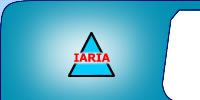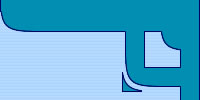

 |
The Second International Conference on Computational Logics, Algebras, Programming, Tools, and Benchmarking COMPUTATION TOOLS 2011 |
| Tutorials |
T1. Programming-based Systems Biology
by Prof. Dr. Corrado Priami
University of Trento, Italy
President & CEO of The Microsoft Research - University of Trento, Italy
T2. Linguistic Geometry Tools: Solving Intractable Search Problems without Search
by Prof. Dr. Boris Stilman
University of Colorado Denver, USA
Chairman & CEO, STILMAN Advanced Strategies, USA
DETAILS
T1. Programming-based Systems Biology
by Prof. Dr. Corrado Priami
The tutorial will present stochastic simulation and analyses techniques to model and analyze biological networks at different level of abstractions, including molecular networks as well as ecological networks. Working on the idea that any biological element is represented as a program and that the interaction between the elements is modeled as message passing between the corresponding programs, we illustrate an efficient programming language-based tool that has the advantage of compositional and scalable language-based descriptions with respect to ODE-based representations.
The modeling of systems is then made up by setting a piece of software (possibly done graphically and according to predefined templates) for any biological element we are interested in.
We can interpret the piece of software as a black box with a control program inside and a set of interacting domain on the surface. The control program tells the box how to react (behave) depending on the signals received on the interfaces (receptors, active domains) of the box. This is the qualitative modeling.
Since biology is driven by quantities, we need a way to include this information in the model. We then associate any interface of the box with a type and we define a notion of complementarity between types.
The complementarity is defined through a probabilistic distribution that provides a description of the level of compatibility as well as of the speed of the potential interaction between two interfaces with compatible types.
A major achievement is the compact, unambiguous description of networks that we can get through this approach. A single element in the model is enough to represent a species in all the states it can compare in the biological system during evolution. All the possible interactions between the elements of the model are then generated dynamically by executing the corresponding set of interacting, concurrent programs. This approach is higher level and much more bound to a component-based view of systems than reaction-based descriptions that are usually adopted in ODE based tools.
Furthermore, we can exploit the compositionality principle: once we acquire new knowledge on the system or we want to enlarge the model, we only need to add new boxes with the appropriate interfaces and extend the definition of the compatibility function between types. Then the run-time environment of the tools generates all the possible interactions between the new element and the existing ones. This feature is very useful for studying cross-talks between different signalling cascades or how new species affect ecosystems.
To make intuitive the approach we built a tabular interface to model systems and to grasp data from DBs so that non expert can use the framework programming the systems by simply filling some tables.
T2. Linguistic Geometry Tools: Solving Intractable Search Problems without Search
by Prof. Dr. Boris Stilman
In my tutorial I will explain foundations of LG. I will employ animated narrated movies to introduce audience to the advanced industrial applications (including applications to defense systems) and theoretical tools (including grammars and languages of trajectories and zones). The rest of the tutorial will be devoted to the so-called no-search approach in LG, i.e., the major theoretical result showing that LG generates optimal solutions for a class of large-scale adversarial games. Active participation of the audience is expected and encouraged. The most active participants will receive DVDs with 8 recorded narrated demos and a pdf file of the 60 pages brochure "Linguistic Geometry Tools". The tutorial is intended for both industry practitioners and scientists (including graduate students).